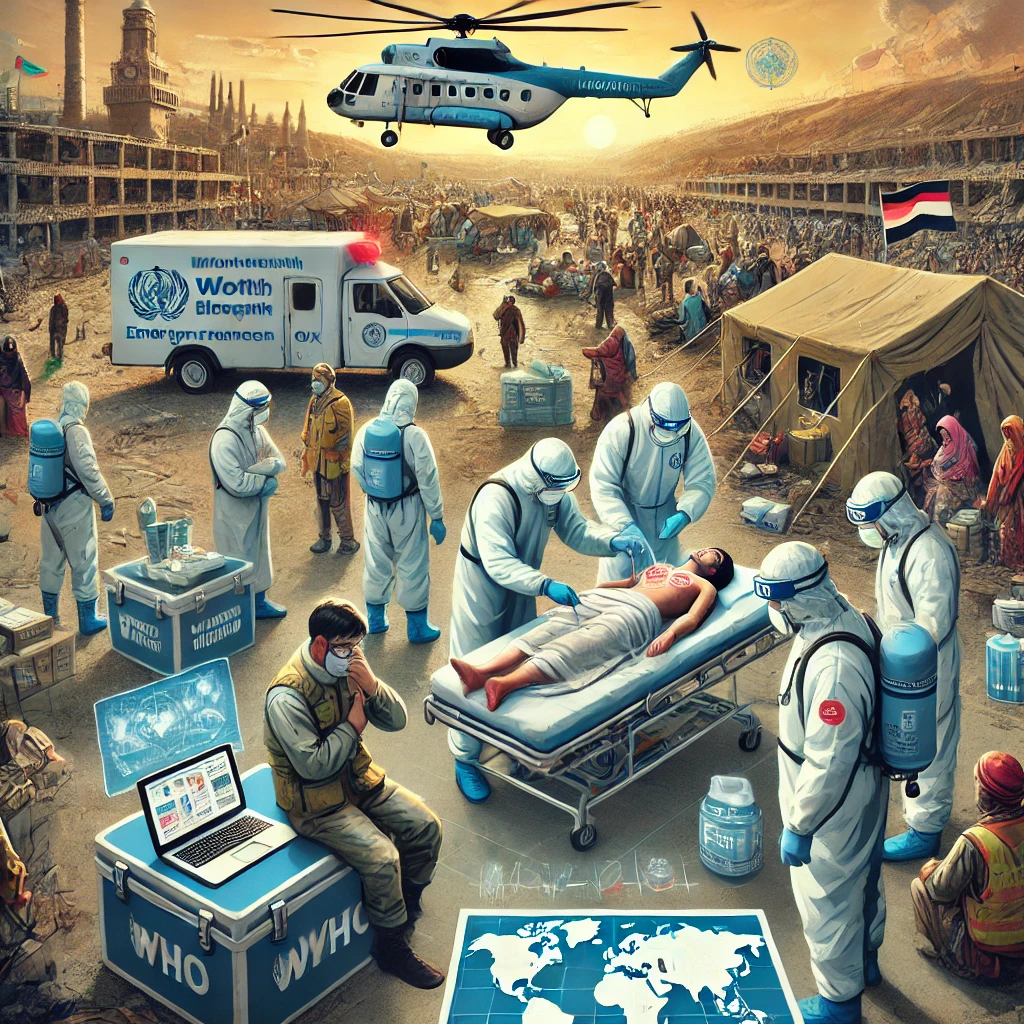WHO Launches New Global Framework to Strengthen National Health Emergency Response Systems
Developed with input from global health experts, national authorities, and international organizations, the framework consolidates years of practical experience in emergency management.

The World Health Organization (WHO) has unveiled a landmark policy document — the National Health Emergency Alert and Response Framework — designed to help countries strengthen preparedness, coordination, and rapid response to health emergencies. The comprehensive framework reflects lessons learned from recent global crises, most notably the COVID-19 pandemic, and provides governments with a standardized, evidence-based approach to manage future health threats effectively.
A Unified Blueprint for Global Health Security
Developed with input from global health experts, national authorities, and international organizations, the framework consolidates years of practical experience in emergency management. It aims to bridge critical gaps exposed by recent pandemics and disasters by introducing a consistent, scalable, and multi-sectoral response model that national and subnational authorities can adopt.
"Health emergencies today are becoming more frequent, complex, and interconnected," WHO officials stated. "Factors such as climate change, urbanization, geopolitical instability, and global mobility are accelerating the emergence and spread of disease outbreaks and disasters. The new framework ensures that countries are better equipped to act quickly, coordinate effectively, and save lives."
Integrating Global Experience into National Readiness
The framework serves as a practical, operational guide that draws on the Health Emergency Preparedness, Resilience, and Response (HEPR) architecture, which integrates over 300 recommendations made after the COVID-19 pandemic. It aligns closely with existing WHO guidance and tools developed with key partners, such as the UN Office for Disaster Risk Reduction (UNDRR) and the Global Health Security Agenda (GHSA).
The WHO emphasizes that the framework is not only for health ministries but also for a wide range of stakeholders, including civil defense, local governments, humanitarian organizations, and community health actors. Its goal is to ensure whole-of-government and whole-of-society readiness in the face of emergencies ranging from infectious disease outbreaks to natural disasters and complex humanitarian crises.
From Early Detection to Recovery: A Full-Cycle Approach
One of the framework's core strengths is its comprehensive structure, which details every stage of emergency management — from early detection and notification to risk assessment, activation of emergency procedures, and coordinated response interventions.
The framework outlines:
-
Detection and early warning systems for identifying threats at the community and national levels;
-
Notification procedures to ensure rapid reporting to public health authorities;
-
Risk assessment protocols for evaluating severity and scale;
-
Activation mechanisms for mobilizing emergency operations;
-
Response strategies that bring together health, logistics, and communication functions; and
-
Operational review and evaluation to inform recovery and resilience planning.
It also incorporates performance monitoring tools that help countries evaluate their emergency response capacity in real time.
The 7-1-7 Model: Measuring Readiness and Speed
Building on the 7-1-7 performance framework, the WHO guide defines clear targets to accelerate outbreak management:
-
7 days to detect an outbreak from its emergence,
-
1 day to notify national public health authorities, and
-
7 days to initiate early response actions.
This measurable approach, first introduced in 2022, provides a quantifiable benchmark for national performance and supports accountability and continuous improvement in outbreak response.
Tools for Governments and Practitioners
The framework includes a suite of operational tools, such as checklists, decision trees, and flowcharts, designed to make emergency response systematic, transparent, and efficient. It also references existing WHO standards like the International Health Regulations (IHR 2005), Joint External Evaluations (JEE), and National Action Plans for Health Security (NAPHS), ensuring that all aspects of preparedness and response are harmonized across systems.
By standardizing emergency procedures, the guide also aims to reduce confusion and duplication between national and international actors during crises — a major issue observed during the COVID-19 response.
Strengthening National and Regional Capacity
The WHO stresses that the framework will empower countries to respond effectively at any scale, whether dealing with local outbreaks or large-scale emergencies. It encourages governments to establish national emergency operations centers (EOCs), strengthen real-time surveillance, and integrate cross-sectoral coordination mechanisms for joint decision-making.
By embedding the framework into existing health systems, countries can move toward a more resilient, equitable, and responsive health infrastructure — one that protects populations not just from pandemics, but also from climate-related disasters, chemical accidents, and emerging zoonotic diseases.
A Critical Step Toward a Safer, More Prepared World
The release of the National Health Emergency Alert and Response Framework marks a pivotal moment in global public health governance. It transforms years of fragmented recommendations into a unified, actionable guide for policymakers and responders.
Dr. Mike Ryan, Executive Director of WHO's Health Emergencies Programme, underscored the framework's long-term importance:
"Preparedness is not a one-time effort — it is a constant investment in systems, people, and partnerships. This framework ensures that no country faces the next health emergency alone or unprepared."
The framework aligns with WHO's broader commitment to the Pandemic Accord negotiations, which aim to strengthen international cooperation and equitable access to countermeasures during global crises.
Looking Ahead
With its structured, evidence-based approach, the new WHO framework provides governments, health authorities, and international partners with the tools they need to anticipate, prepare for, and respond to health emergencies of all kinds. It represents a shift from reactive crisis management to proactive, integrated resilience-building — an essential step in protecting populations in an era of escalating global health threats.
ALSO READ
-
People used to elect govt, but now BJP wants to select who will vote, claims TMC's Abhishek Banerjee at press meet in Kolkata.
-
WHO Revitalizes Pacific Open Learning Health Net to Strengthen Regional Health Workforce
-
Nutrition with Caution: WHO’s New Rules on Fortifying Oils for Public Health
-
WHO Uganda’s ‘Men Talk’ Series Redefines Masculinity and Mental Wellness
-
Remembering Piyush Pandey: The Ad Maestro Who Redefined Indian Advertising








